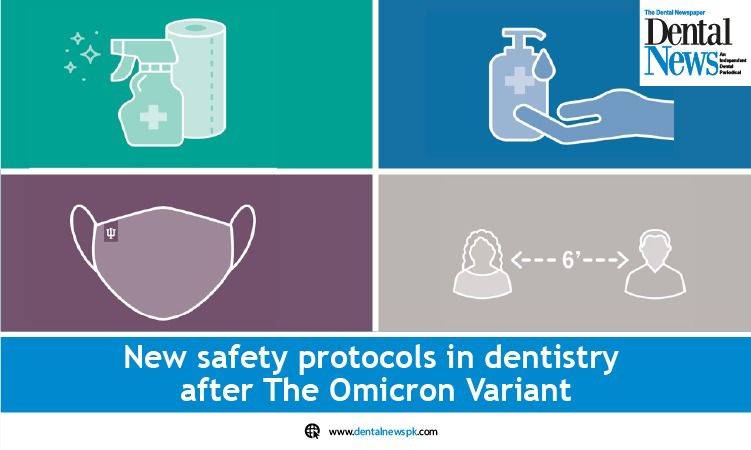
The Omicron variant of the SARS-CoV 2, with its brand-new epidemiological properties, seems to have finally made its way to the Southeast Asian region, specifically Pakistan.
While the health sector of Pakistan gears up to tackle the upcoming challenges this new variant may bring, we can't help but wonder if history will repeat itself.
The dental health arena was severely affected during the first wave of the pandemic. In 2020, most dental practices were shut down or operated on a need only basis. Hospitals claimed to entertain only emergent cases, and patients were strictly advised to enter the premises without attendants unless necessary. All clinicians wore hazmat suits and face shields and incorporated COVID symptom-related questions during the patient interview or patient history questionnaires.
Regardless of these regulations and strict sterilisation protocols, cross-infection was rampant.
There is no doubt that the new Omicron variant is highly transmissible. However, it is not, in degree, any more invasive in its nature than the previous Delta variant. To curb this biohazard, a recent study proposes the adoption of new safety protocols in order to ensure more controlled management of the infection.
The newly introduced biosafety protocol has been tested clinically for 18 months and incorporates a trifecta of,
● UVC air disinfection
● Air saturation with certified virucidal oils through nebulising diffusers
● Telehealth solutions
While the basic protocol for the prevention of SARS-CoV-2 has been the same ever since the pandemic, more precise, simple, and sustainable measures have been incorporated time and again to boost the efficiency of safety protocols.
Here are some advancements and technologies in the newly updated cross-infection protocols.
Minimising The Risk Of Exposure
If there is one thing evident in dental treatments, it is the need for visits and follow-ups to ensure adequate treatment plans and procedures. Meanwhile, constant visits have become quite a dilemma, given the need for isolation to prevent transmission of the virus. Reducing the time duration of treatment by doing multiple steps in a single setting, pre-ordering specific tools and preparations needed for the dental treatments, and reducing the number of visits are some of the ways the exposure to the virus can be minimised.
Decontamination
While dentistry revolves around disinfection and sterilisation, the former was given a new meaning amidst the pandemic waves. Covid is one set of infections which poses a threat to both the doctor and the patients. Meanwhile, dentists also have been on the lookout for HIV, Herpes and other common viruses. While other viruses and infections can be avoided via simple disinfection protocols, covid requires mechanical and physicochemical prevention. The use of PPE, air sterilisation, and Two-phase air treatment to prevent aerosol transmission and air contamination in closed spaces are some of the significant advances in light of COVID-19.
Adding floor cleaning by robotic vacuuming with disinfection mop - via robotic jet technology is another way to enhance disinfectant measures.
Prevention Via Artificial Intelligence And Smart Apps
A patient input filter utilising intelligent pandemic sentinel apps is one way to track symptoms and monitor the infection status soon after contamination from the virus. Artificial Intelligence tools used in dentistry allow the doctor to monitor the patient's condition in real-time and take appropriate measures accordingly. The tools allow the patients to scan their teeth and forward them for a thorough review to the dentist. The technology is ideal for identifying situations which need immediate intervention.

Dr Rida Qamar
The author is contributing writer at Dental News Pakistan and can be reached at Ridaqamar100@gmail.com

